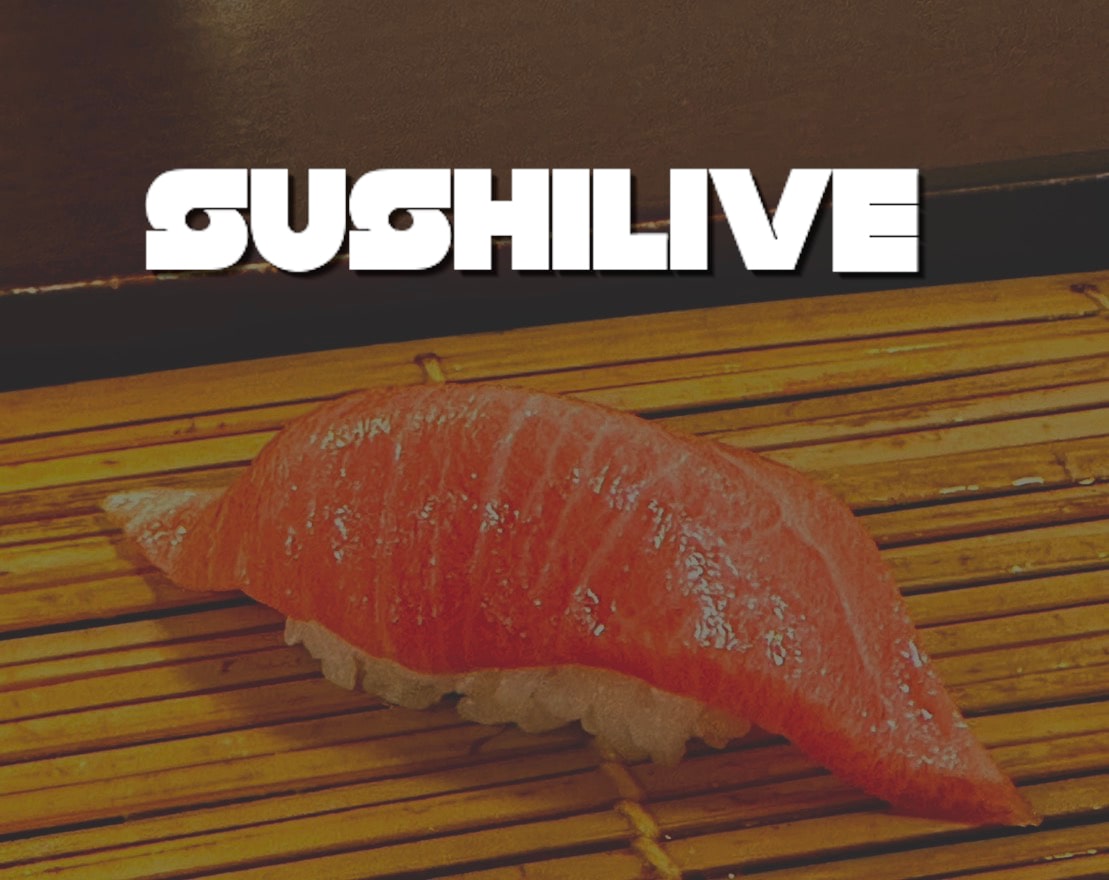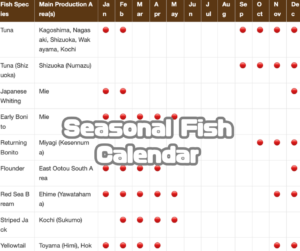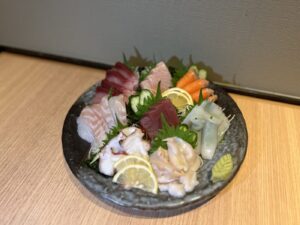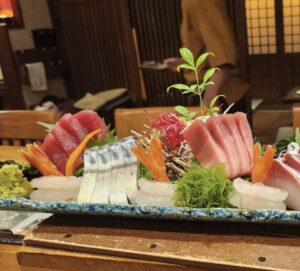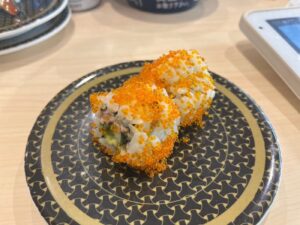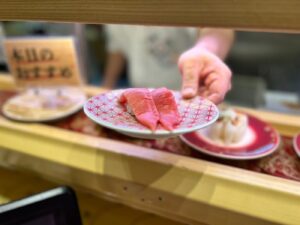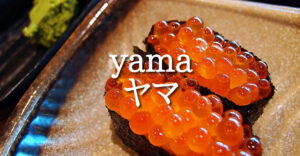Sushi is a familiar dish for Japanese people, and even today it is enjoyed by a wide range of people in many different forms, from haute cuisine to kaitenzushi (conveyor-belt sushi). Many people probably think of sushi as a form of sashimi on a bed of vinegared rice, but did you know that sushi originated in a completely different form? In this issue, we will introduce the history of sushi in Japan and how it came to be in its present form.

What is the origin of sushi?
Sushi is believed to have originated in Southeast Asia as “nare-zushi” (mature sushi). Nare-zushi is a fermented food, characterized by fermenting the rice grains until they become mushy. It was invented by a tribe living in a mountainous area at that time as a way to preserve fish for a long period of time, which was hard to come by. To preserve river fish, rice and other grains were cooked and marinated together with the fish, and the fermentation of the rice preserved the fish.
History of Sushi in Japan

So how did Japanese sushi come to be what it is today? Let’s take a look at its history.
Introduced to Japan in the Nara period (710-794)
The aforementioned “nare-zushi” is said to have been introduced to Japan around the Nara period (710-794). It was eaten as a preserved food, consisting of rice seasoned with sweet vinegar and topped with river fish such as ayu (sweetfish) or crucian carp and left to rest overnight. It is also known that these were offered as tribute to the imperial court and were the food of the nobility.
Remnants of nare-zushi from this period can be found in funa-zushi (funa-zushi) in Shiga Prefecture. In the Kamakura period (1185-1333), nare-zushi using leftover fish also appeared. At that time, rice was not for eating, but for fermentation.
Muromachi Period (1333-1573): Emergence of “Nama-nare
It was during the Muromachi period (1336-1573) that the fermentation period was shortened and rice was also eaten. Because the fermentation process was stopped while the fish was still young, the fish was not fully fermented like in “nare-zushi” and was close to its raw state, hence the name “nama-nare.
With the advent of “nama-nare,” there was now a time to eat sushi, and sushi could be made in advance of the day it was to be eaten. Sushi has evolved from a mere preserved fish food to a rice dish. Sushi was made by alternately marinating salted fish and rice in a sushi tub and then placing a weight on the tub to allow the flavors to blend.
The Edo Period (1603-1867), when sushi became much closer to its current form
In the mid-Edo period (1603-1867), when rice vinegar was widely produced and distributed, and became readily available to the general public, “haya-zushi” sushi, which did not require fermentation, was born. In this way, the common people were able to eat sushi immediately without having to wait. However, even at this time, the Emperor’s family, the shogun’s family, the daimyo’s family, and other prestigious upper classes often ate nare-zushi to maintain tradition.
Nigiri-zushi” appeared in the late Edo period
It was not until the end of the Edo period (1603-1867) that nigirizushi came to be eaten as we know it today. Nigiri-zushi” was created at yatai (food stalls) that were popular in Edo (Tokyo) and could be eaten immediately after nigiri sushi was made. It was called “Edomae-zushi” because it was made with seafood and nori (seaweed) caught in the Edo area (Tokyo Bay).
Nigiri-zushi at that time was about the size of an onigiri (rice ball), so it was cut into pieces and eaten separately, and the style of serving two pieces of sushi on one plate is a remnant of those days when sushi was cut into pieces. As will be explained later, until the Taisho era (1912-1926), when the variety of ingredients increased and the size of sushi became smaller, the size of a piece of sushi was “one and a half to two bites,” which is slightly larger than the size we imagine nowadays.
In the Meiji era, the neta became sashimi.

After 1897, when the ice-making industry began to flourish, combined with the development of fishing methods and distribution, sushi restaurants, which had previously been unable to handle raw sashimi, were able to preserve the neta by chilling it with ice. The common method of serving sushi today, where the ingredients are coated with boiled-down soy sauce, is a style established during this period.
In the early Taisho period, electric refrigerators appeared in sushi restaurants. The variety of ingredients was increased and the size of the items was reduced. It is believed that it was sushi chefs who were scattered throughout Japan after the Great Kanto Earthquake that introduced the sashimi + vinegared rice style of nigiri-zushi to the nation.
Recommended Rice for Sushi
Sushi has evolved uniquely in Japan as a fine rice dish, but what kind of rice is best suited for sushi?
What kind of rice is suitable for sushi?

In the early Taisho period, electric refrigerators appeared in sushi restaurants. The variety of ingredients was increased and the size of the items was reduced. It is believed that it was sushi chefs who were scattered throughout Japan after the Great Kanto Earthquake that introduced the sashimi + vinegared rice style of nigiri-zushi to the nation.
Recommended Rice for Sushi
Sushi has evolved uniquely in Japan as a fine rice dish, but what kind of rice is best suited for sushi?
What kind of rice is suitable for sushi?
This type of rice absorbs the sushi vinegar well, yet easily holds it together in the hand, and loosens easily when placed in the mouth. In other words, rice that is less sticky and light is suitable for this type of sushi. Sasanishiki, Akita Komachi, Haenuki, etc. are good choices. In fact, even though the production of Sasanishiki is decreasing, many sushi chefs still use Sasanishiki for their specialties.
We have rice recommended for Sushi at Gohan Sairai!
Gohan Sairai also offers Sasanishiki, Akita Komachi, and Haenuki rice. Please try to choose the right type of rice when making sushi at home.
Sasanishiki
Sasanishiki is a light, representative type of rice that is favored by the most discerning sushi chefs and brings out the flavor of the vinegar and the ingredients. Although its acreage has decreased due to the shift in Japanese people’s preference toward the firm and sweet Koshihikari variety, it used to be a popular variety that split the two in popularity with Koshihikari. Why not try Sasanishiki, which offers the pure taste of old-fashioned Uruchi rice?
Akita Komachi
While having Koshihikari as its parent, Akita Komachi has a light texture and is perfect for sushi. Its sweetness and flavor are similar to Koshihikari, so it will suit the tastes of modern Japanese people. Akita Komachi’s greatest feature is that it goes well with sushi rice. The vinegar content in Akitakomachi rice is very good, giving the rice a luster, and the texture of the rice when chewed is irresistible. It also gives sushi rolls a beautiful cross-sectional finish.
Haenuki
Haenuki” is used for rice balls by major convenience store chains. It is a brand-name rice grown in Yamagata Prefecture and is rarely grown outside of Yamagata Prefecture. Each grain is large and firm, with just the right amount of sweetness and flavor. The rice is less sticky and easily loosens up, making it perfect for sushi rice.
Summary
Sushi began in Southeast Asia as “nare-zushi” to preserve fish, and evolved into its current form after being introduced to Japan. The sashimi + vinegared rice style is often referred to as a symbol of Japanese culture, but it was not until the Meiji era (1868-1912) that this style was settled upon. We invite you to think about the sushi chefs’ commitment to using the perfect rice for sushi.

